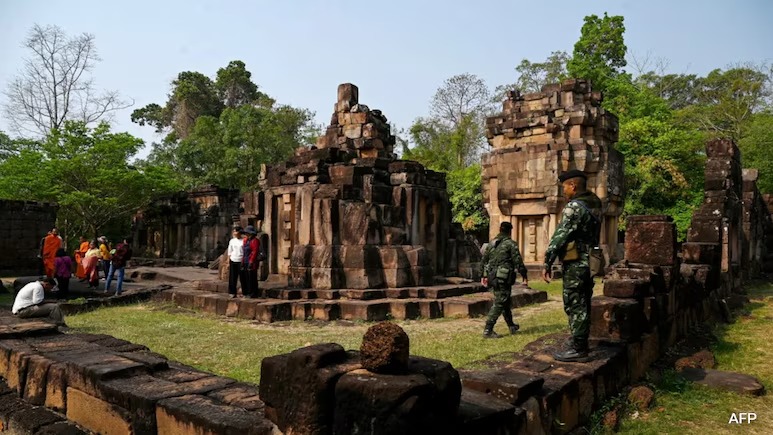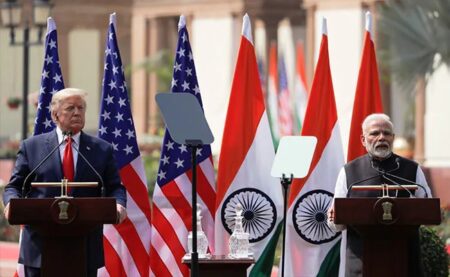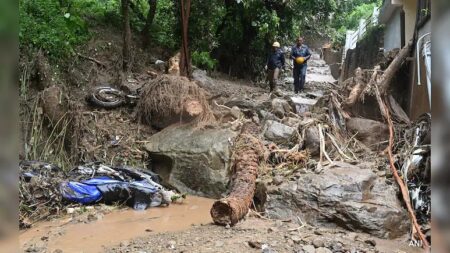New Delhi: Violence has flared once again along the Thailand-Cambodia border, reigniting a long-standing dispute centered around a group of ancient Hindu temples. The latest escalation, which occurred on Thursday, marks the most intense outbreak of hostilities in over a decade. Clashes between the two Southeast Asian neighbors left 12 people dead, dozens injured, and triggered the evacuation of around 40,000 Thai civilians from 86 villages near the conflict zone.
At the center of the tensions are the Preah Vihear and Ta Muen Thom temples — centuries-old shrines dedicated to Lord Shiva. Perched atop a 525-metre cliff in Cambodia’s Dangrek Mountains, Preah Vihear is a 900-year-old temple built during the Khmer Empire. About 95 km west lies the 12th-century Ta Muen Thom temple, situated along the forested, mountainous border between Cambodia and Thailand.
Though less globally recognized than Angkor Wat, these temples have long been the focal point of a territorial dispute stemming from colonial-era maps and unclear border demarcations. The current conflict erupted near Ta Muen Thom in Thailand’s Surin Province. According to Thai officials, the confrontation began when Cambodian troops allegedly flew drones near Thai military positions, prompting a response. Thailand claims it acted in self-defense after Cambodian forces, equipped with RPGs, ignored efforts to de-escalate. Cambodia, however, accuses Thailand of violating its sovereignty and provoking the clash.
In response to the violence, Thailand raised its military alert to “Level 4” and shut down all border checkpoints. The swift escalation forced mass evacuations and placed the disputed region on high alert.
The root of the conflict lies in complex historical and legal disagreements. In 1962, the International Court of Justice (ICJ) ruled that Preah Vihear temple belonged to Cambodia and ordered Thailand to withdraw its forces. The court based its decision on a 1907 map drawn by French colonial authorities that showed the temple within Cambodian territory. Though Thailand initially accepted the map, it later contested its legitimacy, claiming it was based on a misunderstanding of natural borders.
In 2013, the ICJ reaffirmed Cambodia’s sovereignty over not only the Preah Vihear temple but also its surrounding area, further instructing Thailand to withdraw troops. Despite this, sporadic clashes have continued, especially around the Ta Muen Thom temple complex, which includes three smaller temples — Ta Muen Thom, Ta Muen, and Ta Muen Tot.
Ta Muen Thom holds particular significance due to its unique architectural style. Unlike most Khmer temples that face east, Ta Muen Thom’s main shrine faces south. A naturally formed Shivling remains enshrined in its sanctum, reinforcing its spiritual and historical value. Its remote location has made it a recurring hotspot. Earlier this year, tensions flared after Cambodian soldiers reportedly sang their national anthem at the site, leading to a heated exchange with Thai troops. A video of the incident went viral, further inflaming nationalist sentiments on both sides.
The origins of the territorial dispute can be traced back to colonial treaties signed between France and Siam (modern-day Thailand) between 1904 and 1907. French surveyors used watershed lines to demarcate the boundary but made exceptions for culturally significant locations like Preah Vihear. Many Southeast Asian historians argue that the Western-style boundary system imposed by colonial powers was foreign to the region’s traditional, more fluid political boundaries.
The issue resurfaced in 2008 when Cambodia succeeded in getting Preah Vihear designated as a UNESCO World Heritage Site. The move triggered widespread backlash in Thailand, leading to the resignation of its then Foreign Minister Noppadon Pattama, who had supported Cambodia’s bid. Clashes soon followed, resulting in casualties on both sides.
The renewed violence in 2025 has once again drawn attention to how deeply historical grievances, nationalism, and colonial-era cartography continue to influence modern geopolitics in Southeast Asia. With both countries standing firm on their respective claims, and with public sentiment running high, the path to a peaceful resolution remains uncertain.
Trending
- Goa CM Promises Crackdown on Fraudulent Surname Changes
- India, Philippines Hold First-Ever Naval Drill in Disputed South China Sea
- Murali Sreeshankar Clinches Long Jump Gold at Qosanov Memorial 2025 with 7.94m Leap
- Not Workload, But Injury: Real Reason Behind Jasprit Bumrah’s Exit from England Series
- United Club Seraulim Edge Past Guardian Angel SC to Reach 17th St. Anthony Festival Cup Final
- Pidadigal SC Clinch 2nd Caniza Peixoto Memorial Football Title Rywan Fernandes shines with a brace in thrilling 2-1 final win over Cumborda SC
- Coastal Noise Pollution Sparks Assembly Uproar; CM Promises Crackdown
- Opposition Demands Demolition Of Illegal Old Goa Bungalow








